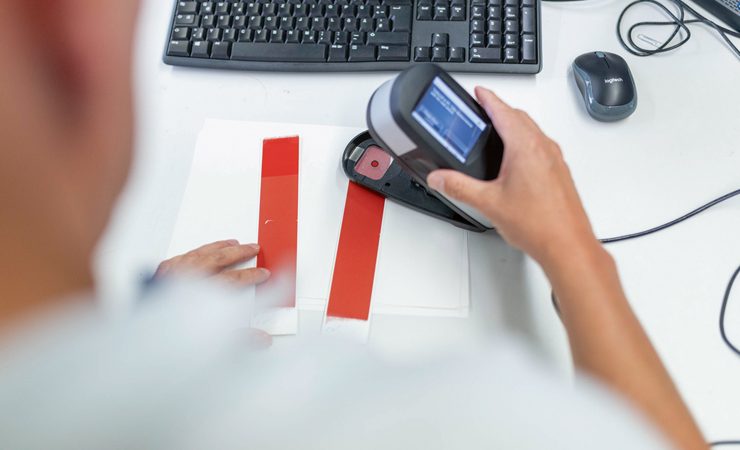Given the increasing cost pressures facing the printing industry, digitalisation and process optimisation are becoming ever more important for printing companies to reduce production costs.
In offset printing, companies already work with digital job tickets, which automatically consolidate all the important job information needed for production and transmit it, usually in PDF/X format, from one process interface to another. Flexographic printing is lagging behind in this respect. Compounding the problem is the fact that with flexo printing, there is a greater number of variables which hinders standardisation and the establishment of a resulting process standard. This means that a large number of factors have to be taken into account to achieve consistent process optimisation in flexo printing.
How to optimise
When creating a process standard, printing houses should first carry out individual areas of process optimisation, which can then be combined in the medium term to create a house standard. Therefore, the first step is to focus on the processes that have the highest optimisation potential. These include reducing waste, optimising costs through rational work order planning and reducing press downtime by shortening set-up times.
There is considerable potential to reduce set-up times in particular, thanks to technical advances that have occurred in the last few years. For example, pioneering sleeve technology has been developed for both printing plates and anilox rollers. In addition, significant progress has been made with regard to software and hardware optimisation, which in addition to reducing the set-up times, has also increased production speeds and improved accuracy. However, when optimising set-up time, colour preparation is crucial. It is still common practice in many printing houses to perform the last 20-30% of the colour optimisation process directly at the printing press. This leads to additional set-up time, which could be avoided. In exceptional cases, this approach may make sense for an initial order with direct customer approval; however, for repeat orders that have already been produced several times, colour optimisation should be carried out in advance of putting the job on press.
hubergroup bases its entire optimisation concept on the principle of ‘First Time Right’, which focuses on stabilising the processes as much as possible so that time and effort is not wasted correcting mistakes further down the line. Following this approach, hubergroup provides customers with long-term support to address the key issues of reducing total cost of operation (TCO) and improving the overall equipment effectiveness (OEE).
First, the operational processes and relevant performance indicators of the current state are evaluated through process analysis, opportunities for improvement are identified, and the KPIs (Key Performance Indicators) are defined. Depending on the scope of the project, this can start before order planning and can incorporate touch points such as pre-press, printing plate and anilox rollers.
To reduce set-up times at the printing press, hubergroup helps to optimise colour preparation in advance so that, ideally, no colour optimisation is required at the press. To achieve this, a reliable colour management system is established, starting with ink formulation right through to processing the left-over ink. Standard ink formulation software as well as a printing proofer are prerequisites for this method.
Even with initial orders, the time needed for colour optimisation can be greatly reduced. In the process, each of these steps is individually adjusted to the suit the particular requirements of each customer.
In the first phase, hubergroup carries out the preliminary work, such as creating the optimum calibration data for the ink formulation software and providing theoretical training. During subsequent phases, the company assists customers with practical and individual support on site. After all, hubergroup does not just aim to convey theory, but also to provide practical support through a team of specialists who are at the customer’s side every step of the way.
The primary steps involved in this optimisation process are:
1. Analysing the current process.
2. Calibrating the printing proofer.
3. Determining the current state of the anilox rollers.
4. Creating so-called thickness objects for the respective anilox rollers.
5. Adjusting the printing proofer.
6. Reviewing the process optimisation.
7. Analysing the results.






